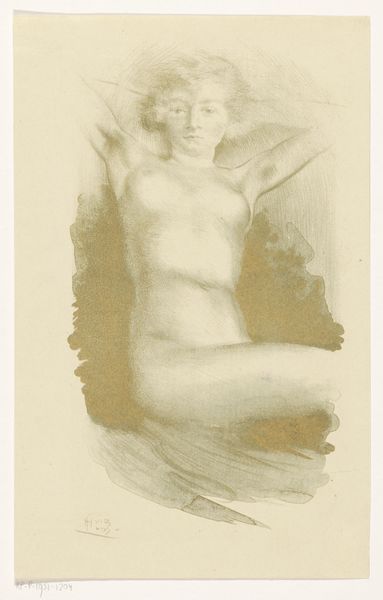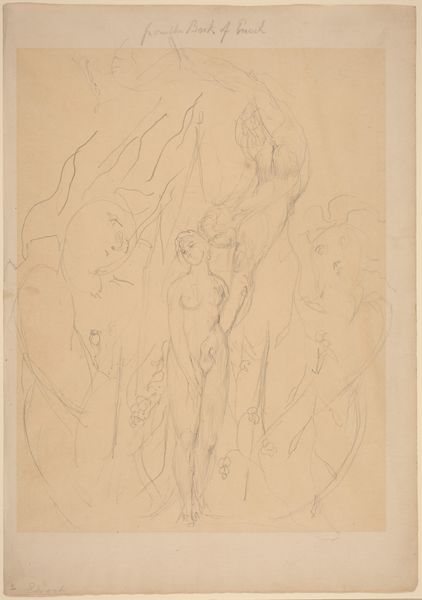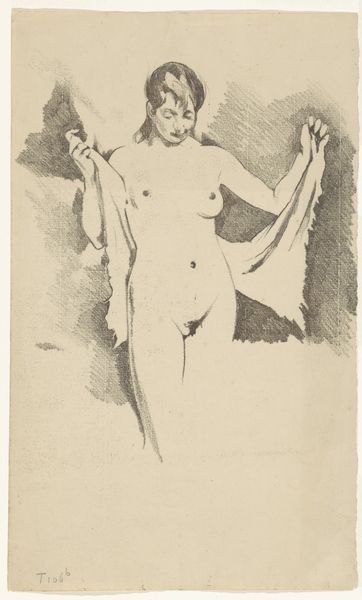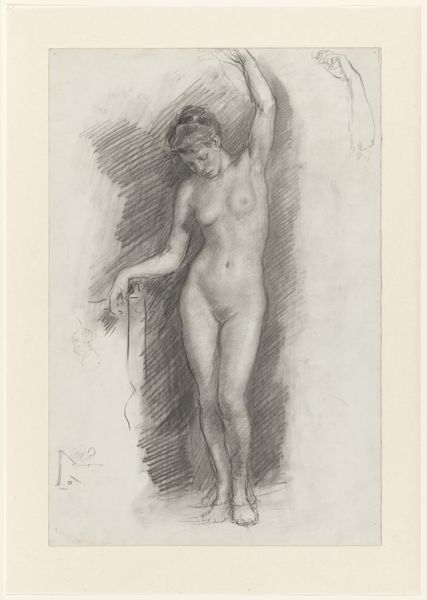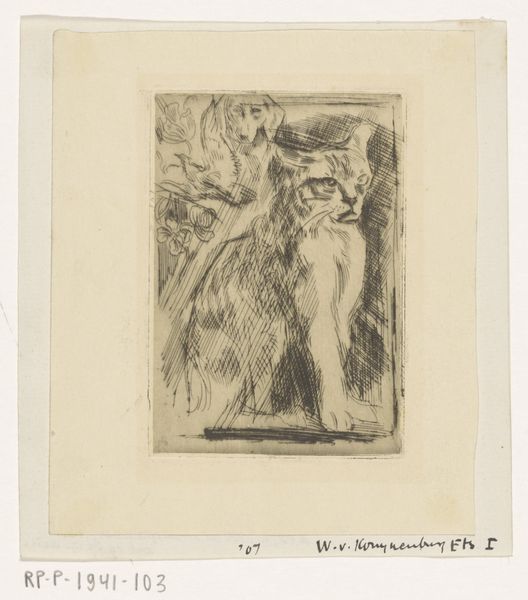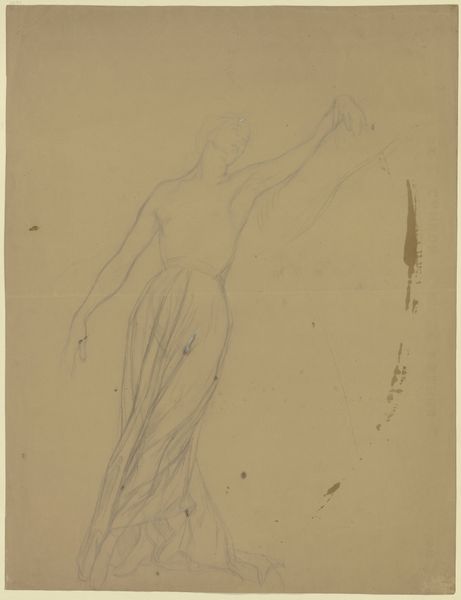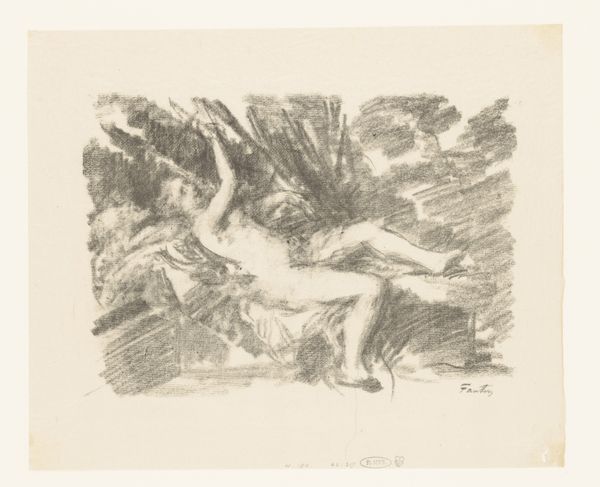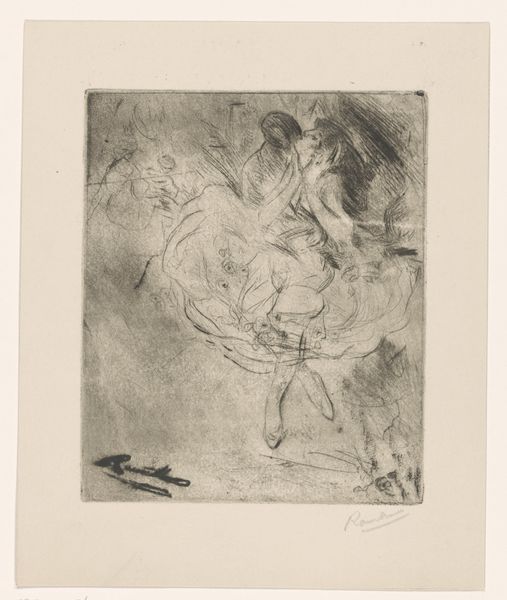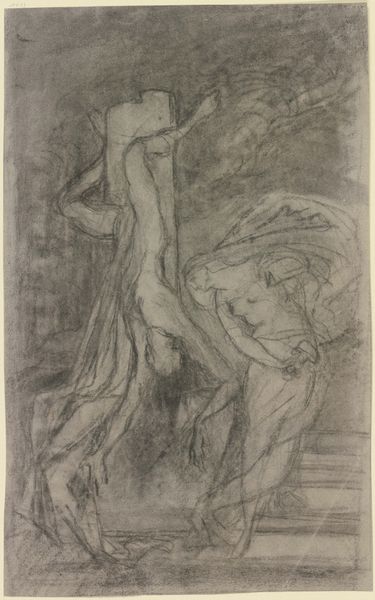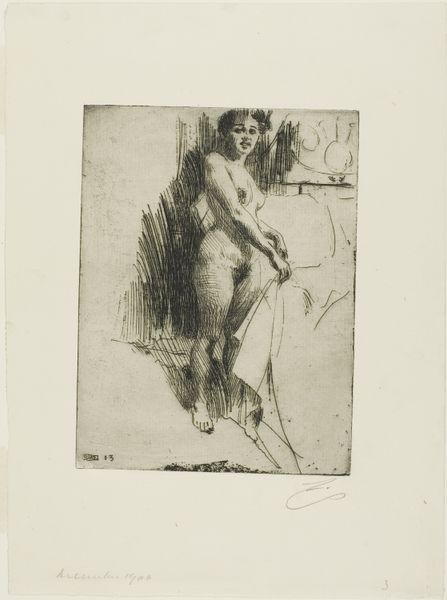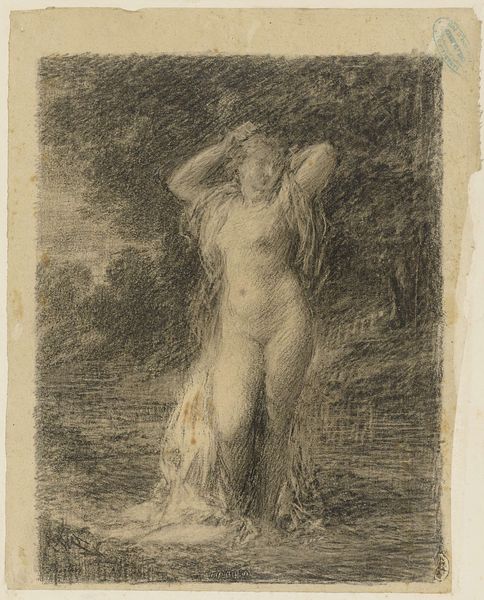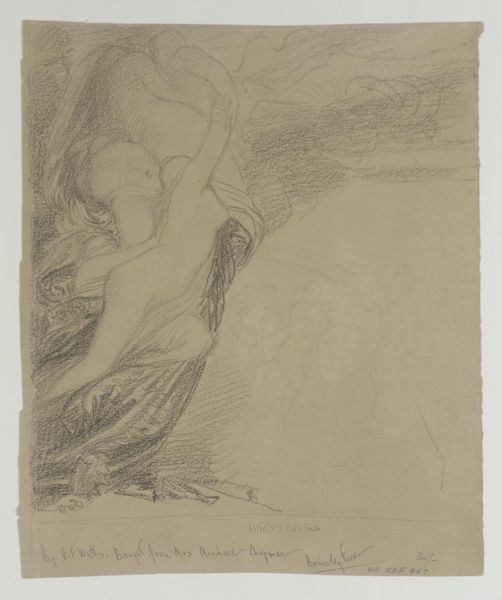
#
amateur sketch
#
light pencil work
#
pencil sketch
#
personal sketchbook
#
pencil drawing
#
ink drawing experimentation
#
pen-ink sketch
#
sketchbook drawing
#
pencil work
#
watercolour illustration
Dimensions: height 370 mm, width 260 mm
Copyright: Rijks Museum: Open Domain
Editor: Here we have Willem Witsen’s “Standing, Nude Woman Drying Herself,” likely created sometime between 1870 and 1923. It's a pencil drawing, and I find the sketch-like quality of it very intimate, like catching a private moment. What do you see in this piece from a historical perspective? Curator: It's fascinating to consider this drawing within the context of late 19th and early 20th-century Dutch art. Witsen was part of the Amsterdam Impressionism movement, but his sketch deviates from the polished, public-facing images typically associated with the time. Think about the social conventions then, the policing of bodies, the limited access to private spaces. Editor: Right, so depicting a nude figure, even in a seemingly simple drawing, could be interpreted as a subversive act, in a way? Curator: Precisely! The act of portraying the nude, specifically in this domestic context, moves the private into a realm of public viewing through exhibition and curation. And consider who Witsen was: a well-to-do artist moving in specific social circles. How did his class and social standing shape his choices in depicting this subject? Was it commentary? Observation? Exploitation? Editor: That's a perspective I hadn't considered. So it is not simply about aesthetics, but about the power dynamics embedded within the image itself. Curator: Exactly. Whose gaze are we adopting when we view this? And how does the institution displaying it– the Rijksmuseum – further influence that gaze today? These choices elevate a private sketch into an object of artistic and potentially even national significance. What’s rendered as mundane is given political weight through this transformation, and its preservation by public institutions. Editor: This has given me so much to think about; I’m really beginning to appreciate the layers of meaning packed into what appears to be a quick sketch! Curator: Indeed, it highlights the complex relationship between the artist, the subject, the audience, and the institutions that shape our understanding of art. It prompts questions about access, representation, and the politics of looking that are just as relevant today.
Comments
No comments
Be the first to comment and join the conversation on the ultimate creative platform.

